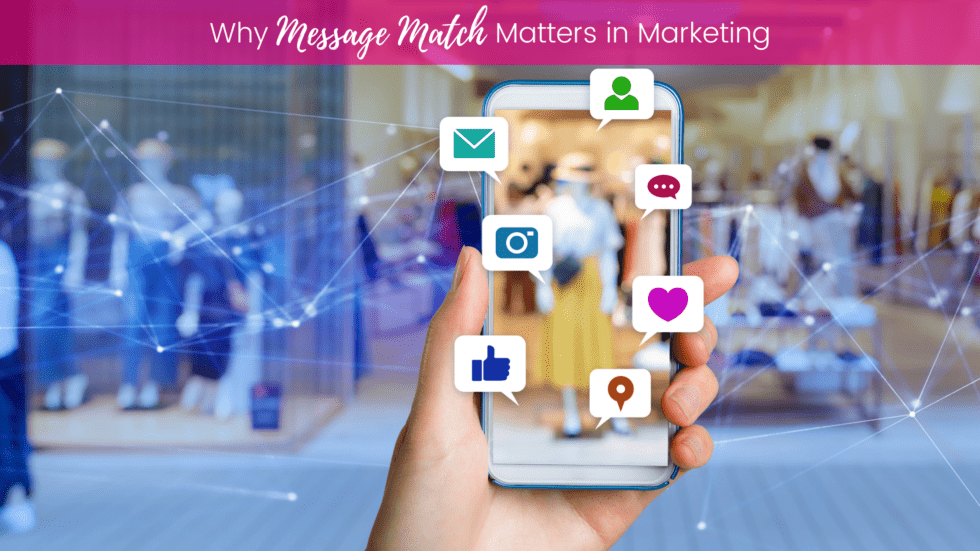First, let’s talk about what exactly “message match” means and why you should care.
Imagine walking down the street or along in a shopping mall. You see a shop window with a gorgeous handbag that is just the right shape, size, and color, so you go into the shop, only to be confronted with sports clothing and paraphernalia. You’d be confused, right? Because the message doesn’t match. You expected one thing, and you got another.
When we bring this idea into our marketing efforts, message match is most often referring to the relationship between an ad, social post, or email that has a link to a landing page. Basically, it means you have to make sure your landing page meets the expectations of your visitor. The message they see post-click needs to match whatever it was they clicked. If your social ad or post offers 20%-off a new pair of shoes, wherever they land post click needs to instantly and obviously let them know how to get 20% off a new pair of shoes.
Sounds simple, right?
But this is often one of the biggest fails when it comes to landing pages. Someone clicks on a link expecting one thing, only to get another.

Or think about it like this … ever been on an online dating site? Many of us may have experience with one or two … remember the individual who didn’t match up with their profile … at all? It feels awful, right? You’ve essentially been lied to. And we do NOT want to have our prospective customers ever feeling like they’re out on a date with a liar.
Instead, you want to make sure that communicating with you and/or responding to your ads and social posts feels like interacting with a person on a great date — it feels good, it’s easy, and it just flows.
How? Simply make sure you have clear message match when creating campaigns that use any of these items leading to a landing page:
- PPC (pay per click) Ads
- Social Posts
- Emails
Headline Message Match
This example from Motley Fool shows how the headline IS a match, even if it’s not EXACTLY the same. The thing is, the headlines are pretty darn close and as you go through the landing page copy, it all ties together. But there’s NO confusion that you’ve landed in the right place after clicking on the ad.

On the left is the Facebook ad, on the right is what I got post-click. No confusion.
Here is an example of where the headline doesn’t match well. I clicked on the Zolucky ad and landed on a page that had a LOT going on …dollar off info (not % as the ad used), plus a 10% off ad, plus info about free shipping … but what do I click on to get 50% off? It’s just a mass of confusion.

The Zolucky ad on the left, the landing page on the right.
Design/Brand Match
Here’s an example where the headlines match, but visually, it’s a bit of a miss. The social post feels informative and topical and has an image that helps orient us into what they’re talking about. But when you click through, it feels like a news story — there are NO visuals to help the visitor understand they’re in the right place. Even though the headline is an exact match, the change of font style and lack of visual had me second guessing. I’m a reader, and I’ll take an extra minute, but if someone is visually oriented, you could lose them.


Most people respond strongly to visual cues, so if your ad looks and feels one way and the landing page another, that’s a disconnect that can truly throw people off and they end up “bouncing” off your page.
Take this (old) example from an Insightly ad and landing page … it’s a TOTAL MISMATCH. Nothing looks right here at all. You’d have NO idea you were in the right place from a visual perspective. This scenario is definitely high on the “don’t do it” list!

Quality Score
Another important reason to make sure you have a good message match is your quality score. Google defines quality score as an estimate of the quality of your ads, keywords, and landing page. If a user has a positive experience and continues on to take action after clicking through, you could increase this score. Higher-quality ads can lead to lower bidding costs and better ad positions.



0 Comments